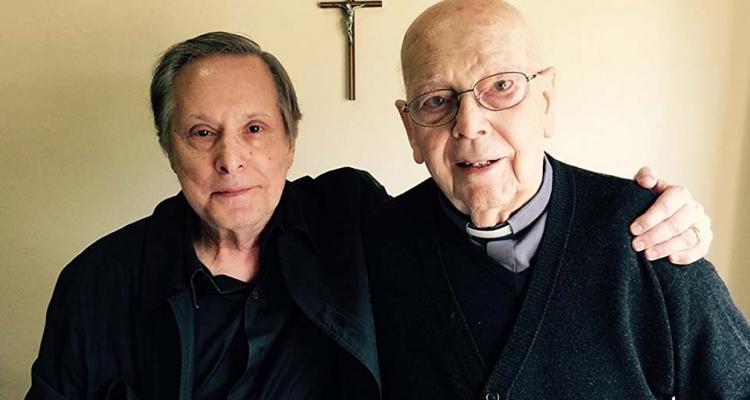One question looms evocatively over the 69 minutes consuming “The Devil and Father Amorth,” Academy Award-winning director William Friedkin‘s (“The French Connection”) latest documentary about real-life exorcisms: “is this really the random invasion of an external force?” A question that has perpetuated the widening of the gap between science and religion, the Vatican’s performance of exorcisms continues to be subject to scrutiny by both non-believers and even those who proclaim belief in Christ.
As viewers will soon find out when watching “The Devil and Father Amorth,” the phenomena of an exorcism is hesitatingly explained by neurosurgeons as “delirium” while psychiatrists note this outward manifestation of sporadic, primitive behavior as “Disassociate Trance Disorder.”
Although the aforementioned fields of scientific study struggle to agree upon a specific diagnosis to a spiritual possession, science in a broader sense concedes that an exorcism (in particular the one depicted in this documentary), is merely a placebo effect caused by religious beliefs and context.
Viewers are also presented with faith-based answers in an attempt to explain this phenomenon, most notably, the existence of Satan. While author Jeffrey Burton Russell warns within the documentary: “to stay away from this stuff,” directing legend Friedkin— whose towering name will forever be synonymous with “The Exorcist,” arguably the most disturbing horror film of all time — has done quite the opposite.
Missing in action for seven years, Friedkin’s comeback project documents what he claims to be, a real-life exorcism performed by the titular Father Gabriele Amorth—the Catholic Church’s beloved head exorcist for the Diocese of Rome for more than 30 years. The subject of Father Amorth’s services is Christina, a middle-aged woman attempting to rid her body of what she believes to be Satan.
Although this documentary is a far cry from his 1972 head-spinning and chunk-spewing chiller, “The Devil and Father Amorth” encounters Friedkin once again passionately dealing with satanic forces 45 years later. In fact, Friedkin’s fascination with the controversial subject matter seems to have grown more obsessive over the years. Unfortunately, Friedkin’s passion for this religious practice comes across as overbearing as he asserts himself in almost every single aspect of production: cinematography, direction, and narration.
Because Friedkin spreads himself so thin, the documentary itself, as sadistic it may sound, fails to echo how much the matters surrounding the practice of exorcisms mean to Friedkin.
Entrenching himself as the tour guide and “expert” to all things exorcism from the get-go, Friedkin’s approach as the narrator is a blundering attempt at a “Cold Case Files” or “Dateline” vibe, which further devalues what this cinematic legend has to say about anything.
It’s easy to get caught up in how poorly Friedkin made this documentary—nevertheless, it’s quite bizarre witnessing the disturbing nature of a ritual few have ever experienced. With that being said, having someone as anxious as you guide your fears and interests through almost 20 minutes of what is advertised as a real exorcism, is what makes this film an intriguing experience.
When considering the selling point of this documentary—the actual exorcism – it’s difficult to determine whether the events depicted are a hoax or not. There are aspects of Cristina’s possession that make you snicker in disbelief, most notably her possessed, guttural voice uttering cliches, “She is mine, she belongs to me,” “We are legion” and among others, “I am Satan,”
Viewers will be divided by what they see in Cristina’s exorcism, but the credibility of a Friedkin documentary is severely tested in the movie’s closing moments. Friedkin claims to have met up with her after the fact for an interview. These plans are upended by a demonic display on Cristina’s part once Friedkin meets with her. Inconceivably, and conveniently, Friedkin the documentarian suspiciously does not have his camera amidst this “horrifying” experience (highly dubious), leaving audiences to believe Friedkin’s account as truth, with goofy b-roll to boot.
Whether it is genuine or not, the footage of Cristina’s exorcism is quite startling, regardless of one’s belief system and determinant of good/evil. “The Devil and Father Amorth” will polarize audiences, and while a good portion of Friedkin’s documentary will fail to change anyone’s minds, it will keep viewers gravitated to its sales pitch—the exorcism itself. [C]

